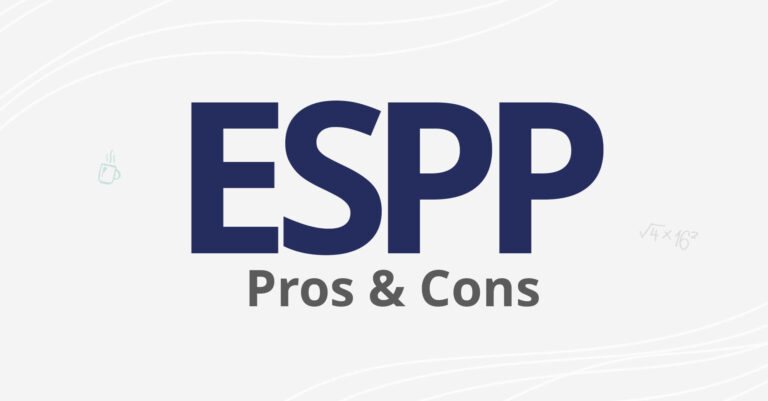A long-term incentive plan (LTIP or LTI plan) is a compensation program that offers your employees incentives above basic salary for achieving predetermined goals.
Here, we’ll take you through the key steps associated with designing an LTIP, so you can determine how to best develop your LTI plan to attract the employees you want and help you achieve your goals.
Step 1: Set up / Refresh plan goals
From the start, you should determine the objectives of your LTIP. Some common goals of an LTIP are to attract talent, retain key employees and motivate staff to grow the business like increase profit and company stock price. If this is not the first year of your plan, then review your current plan to update the goals. Determine if there are any new business goals to be added? Any current ones to be rewritten?
You should also do up a list of the limitations and concerns you have about setting up LTIPs, e.g. budget concern, share dilution, valuation of equity, equity transfer to third parties, etc. This will make it easier to track and address them.
The more specific and clear they are, the more effective your plan will be.
Step 2: Conduct research
The purpose of introducing an LTIP is to incentivize your employees to achieve the goals you want, so having a competitive compensation offering matters. What you should do in this phase is to benchmark against your peers’ packages and identify not only what interests your employees but other employees in your sector.
Having the right peer group is important in evaluating the reasonableness and effectiveness of a long-term incentive plan. When selecting a peer group, not only should you factor in size, industry, and other basic company information, but also expand your criteria to create more accurate and relevant plans. Those can include performance, geography, human capital and so on.
Ignoring this step can fail your LTIP. For instance, if you have your performance metrics set too high to achieve or the performance payout percentage is too low, then it may not be able to attract your prospects or motivate your employees, meaning your LTIP will be deemed to have failed.
Step 3: Consider your design details
There are a number of components in an LTIP design – types of vehicle, eligibility, vesting, termination rules, etc. These will depend on the business ownership type, goals, peer group, employee behaviors, limitations on resources and other factors highlighted in the previous steps.
Your LTIP design drives the success of your plan so take your time to carefully consider each component:
- Types/numbers of vehicles:
Will you adopt appreciation-based (e.g. SARs, options), time-based (e.g. RSUs), performance-based (e.g. PSUs), or cash-based awards in your plan? Each vehicle can help achieve different goals, e.g. using RSUs and options can help increase stock price while PSUs are effective in reaching specific financial, operational, or strategic goals. You can also use a combination of them. Check out our LTIP guide to see their pros and cons, or simply speak with us. - Eligibility:
Common criteria for eligibility include job category (e.g. sales, marketing and production), length of service, and position (e.g. senior manager, executive). If you want to achieve certain goals that involve a broader range of teams, you may want to consider including the managers of these teams in the plan to further motivate them to focus on those goals.
Again, go back to your goals when considering the eligibility. - Vesting schedule:
Vesting is a waiting period before receiving award ownership, determining when LTI awards are paid out. There are mainly two vesting schedules – Cliff vesting (receive the entire award in one go after some time) and Ratable/Graded vesting (receive a portion of the total award gradually). Be aware that the term should suit both your needs while also remaining appealing to employees. You might opt to go for a longer vesting period, however your employees may want to avail of an earlier payout.
Some companies are creative in designing vesting to balance out different concerns. For example, Google has shifted to more front-loaded vesting for its RSUs – from vesting 25% evenly each year to vesting 33% per year for the first two years. This can provide a compelling alternative to the standard approach. - Performance metrics and goal settings:
Performance-based LTI awards are highly common among executives. They motivate senior and high-ranking employees to focus on key strategic areas by linking their incentive pay directly to these performance metrics. Common metrics are stock price/TSR and Earning measures.You should also consider the level of performance required to earn the LTI payout and the performance period over which the metrics will be measured. - Other details:
An agreement should spell out all the plan details including any dividend reinvestment, malus and clawback provisions, termination rules, and price for repurchasing an employee’s LTI award.
It is good practice to involve wider teams such as the Payroll, HR, Finance and Legal departments in this step to help refine your proposed plan and use their expertise to identify any roadblocks that you may have overlooked. For instance, your Finance/Accounting team could help you understand the tax reporting requirements (e.g., Forms W-2, Form 1099, K-1, etc.) and other accounting expense and reporting elements.
The earlier in the process that you enlist their support, the smoother your plan implementation and administration process should be later on.
Step 4: Understand your global workforce
If you intend to offer your LTI awards in multiple jurisdictions, each of these countries will have its own rules around equity compensation and tax. You will need to find an LTIP that works for your workforce in each jurisdiction.
This of course means compliance is an important component to consider. You will need to determine are there any restrictions to offering particular LTI awards in certain jurisdictions? What regulatory consents or filings need to be completed locally? By when do they need to be done, i.e. at what stage of the process?
In addition, be hyper-aware of the cultural differences when customizing your LTIPs. For example, the US has a strong culture of employee ownership (company executives prefer stocks to cash), while in the UK, company executives tend to favor cash to shares. So, make sure to collaborate with your local team or speak to us to learn more about designing an LTIP for your international employees in a compliant and effective way.
Step 5: Communicate
There is little point in having a great offering if your staff can’t figure it out or understand how the plan is going to benefit them. Also, education and communication are often overlooked or left until the last minute, so here, right from the outset, we’re going to incorporate education into your LTIP development process.
Your plan needs to be communicated in plain, no-jargon language with examples, so the benefits are clear to the audience. When crafting content having an understanding of the financial literacy levels of your employee base is important as some people may be new to equity incentives. Also, make sure your communications plan addresses any concerns your employees’ may have raised or need to be aware of, e.g. risks of each vehicle, tax implications, and when and how often the awards will be released.
How people absorb, process and retain information varies, so consider different communication methods for your neurodivergent employees. You might want to choose a mix of options such as traditional leaflets/brochures, email, ebooks, cloud-based video calls, podcasts and in-person Q&A sessions.
So, what next?
Once you’ve your plan structured, you may need to seek approval and discuss the plan implementation and administration before the launch. Even after you’ve launched it, regular evaluation for improvement is important to enhance your plan’s effectiveness at promoting sustainable growth.
Here at Global Shares, we spend all day coming up with ways to help our clients optimize their LTIP management process. It’s what has made us an award-winning equity management company for over 15 years.
Contact us today to see how we can help your company succeed.











